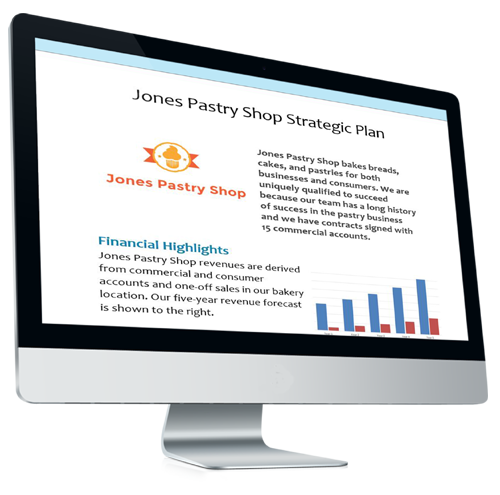Every business needs a vision – a clear definition of what you’d like your business to become in the future. And, every business needs a set strategy – a definition and plan of how your business is going to reach this vision.
All the key elements — what you sell, to whom, for how much, what you promise, etc. — they are all part of your company’s strategy or direction towards creating the business you want. One of my recent articles covered how to set this strategy so that the rules of the game are tilted in your favor.
When you’ve chosen a direction and vision, the next step is strategic planning – mapping out how you will achieve this over a long-term time frame (usually one year). This, like all planning, involves determining what projects you will complete and when, and how you will allocate resources such as man hours, money, and assets.
Lastly, your strategic plan will break down into specific, detailed short-term plans that help you know what to do on a month-to-month and even day-to-day basis.
But can you imagine what happens when you have a short-term plan to handle all the business and projects you have going on, but no longer-term, strategic plan to tie it all together? Maybe you’ve experienced it…the answer is chaos, drudgery, and endless wheel-spinning with little to no progress.
So, let me explain some of the key errors and obstacles facing entrepreneurs and what to do about them:
Unclear, Unshared Vision
With all the time team members spend together in meetings and talking to each other, it’s surprising how often they come away with different mental pictures of what the company is supposed to be and in what direction it’s supposed to be going.
Everyone sees the company’s future from their own perspective and function. It’s your job to repeatedly communicate your company’s vision and strategy to them-50 or 100 times if you have to-so they’re all on the same page and can give you better advice and support.
Operational Thinking Dominates Your Time
This happens when most of the time spent in meetings is discussing how to run the business and putting out the fires that come up so often. Rather than also spending time strategizing and planning.
It’s easier said than done to carve out time in your schedule for strategic thinking and planning, but that’s the nature of entrepreneurship-taking care of today’s business with an eye on the future. Hard to do, but keep in mind that delegating more of the day-to-day operational tasks to your team can free you up to do the strategic work, which may be something that only you can do.
I have to admit, when you show up for work it’s easy to turn your attention first to all of the urgent tasks and demands for your time. Strategic thinking, on the other hand, is one of those activities that time management gurus classify as “Important, but not Urgent” (an example of “urgent” being something you must deal with immediately like an irate customer on the phone).
This means you have to fight for your strategic time, as it’s the process that takes an unfocused business and sets it firmly on the track to success. Block it out on your calendar — each week, schedule time to assess and/or discuss strategy.
Getting Complacent When Things are Good
My friend Paul Lemberg refers to the Comfort Zone phenomenon as leading business managers to become “fat, dumb, and happy.” In other words, becoming complacent when things are going fine. This can lead to becoming reactive with your strategy, rather than proactive. Do you want to be reconfiguring your company and innovating under duress at breakneck speed at the last minute, or well ahead of time when the pressure is off?
Quite a few companies wait until a crisis comes around to kick-start their strategic thinking out of necessity. You don’t want to be planning during a crisis…
Wasting Time With 5-Year Plans
Let’s be honest here…isn’t a five-year pretty much a one-year plan, plus 4 years of guessing?
You MUST have a clear vision of what your company will be like in 5 years, but to try and guess the details of what will be going on in 43 months, for example, in a fast-changing world is wishful thinking.
But once again, you must create your long-term (5 year) vision, which will guide all of your annual and other planning. Take a sheet of paper and describe the key elements of what you’d like your business to do, be, and look like in 5 years. Document this and use it to judge new opportunities and directions to see how well they fit.
Planning Once Per Year, Out Of Routine
We all know how around New Year’s Day, many individuals start thinking about their personal goals for the year ahead. And many businesses work hard on a yearly plan during the same month of every year.
But can you wait to do your strategic thinking until your annual cycle calls for it? The business environment just isn’t that predictable.
I suggest writing up your strategic plan right now and then making periodic changes throughout the year. You must set your annual plan, and then judge your progress and adjust your strategy and plan as needed.
No Process or Methodology For Strategic Planning
I suggest you discuss and choose your strategy in one session, then do your full strategic planning in another.
In setting strategy, you’ll be in creative mode, exploring all possible options. Choose the strategy that makes the most sense, and then figure out the precise action plan to achieve it in a separate, more analytical meeting.
With appropriate time set aside for strategic thinking and planning, and by avoiding the obstacles discussed herein, you’ll experience the joy that comes from knowing exactly what you’re striving for and how to get there.
You’ll feel more grounded, balanced, and centered. You’ll come to work with greater purpose and passion. And you’ll have more to show for your efforts at the end of each year.
Suggested Resource: You just learned how to remove the obstacles that cloud your strategic thinking…a key part of the strategic plan to guide you in growing your business. What else should you include in your current growth plan? Click below to find out.



